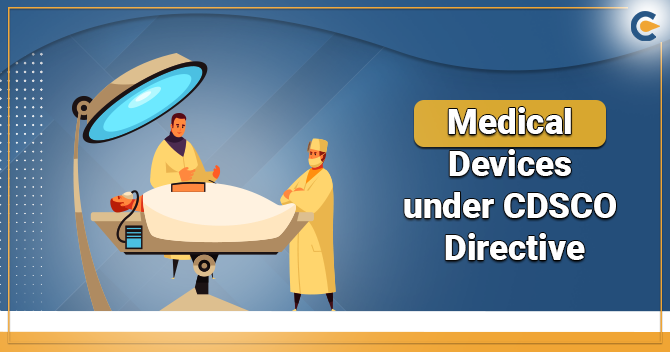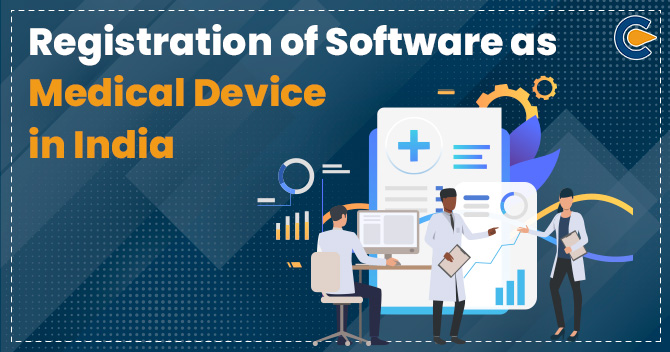Companies have been able to develop devices that give better treatments, more accurate diagnoses, advanced data reporting capabilities, and overall better patient monitoring thanks to technological advancements in and around the medical device business.
Sadly, these quick improvements have also given rise to brand-new, difficult security vulnerabilities for the medical device sector. Several business experts are worried about the potential security risk for medical devices as cyber-attacks become more frequent and sophisticated. In this article, we’ll talk about three of the greatest problems with medical device security as well as three potential fixes.
What is a Medical Device?
A medical device may be defined as any appliance, instrument, material, apparatus, or another article, either used in a singular form in combination with other equipment/devices, including the software essential for its intended purpose by the manufacturer to be used for human beings.
People are increasingly concerned about their health as a result of emerging economies and rising awareness. People are willing to choose cutting-edge technologies and solutions to enhance their health, regardless of the cost. As a result, the industry for medical devices in the healthcare sector has seen tremendous expansion. The medical device sector also includes subsectors such as diagnostics, imaging, cardiology, surgical, and orthopedic equipment.
Challenge: Designing Medical Devices without Cyber security
Although they are purposefully made to operate safely, medical devices rarely have built-in defenses against cyber-attacks like firewalls, two-factor authentication, or intrusion detection.
That isn’t a result of a lack of care; rather, until recently, medical equipment was not seen as a significant target for security flaws and assaults. But patient information and confidential documents have emerged as very attractive targets for hackers.
Hackers may view devices with weak security measures as an entry point to take over huge healthcare databases and hospital systems, even if the hardware or software isn’t utilized to hold any patient data.
Authorities are taking action to solve these security issues with medical devices. Following the identification of a flaw that could potentially allow hackers to alter the amount of insulin given, the FDA issued a warning about a certain brand of insulin pumps in 2019.
Solution: Design Controls and FDA Cyber Security Guidance
The best security practices must be used while designing connected devices. Exactly for this reason, the FDA[1] published two guideline documents to assist manufacturers in doing this during the premarket stage:
- Premarket Filings for Medical Devices with Software
- Off-the-Shelf (OTS) Software and Networked Medical Equipment Cyber security
The FDA has provided a non-exhaustive list of other measures that manufacturers can take to improve medical device security:
- Restricting illegal access to medical devices with two-factor authentication.
- Use firewalls that are sufficient and current.
- Disable all superfluous ports and services and keep an eye out for illegal use.
- Detection of commercial software, if necessary.
- Virus protection, as needed;
- Encryption of important data
FDA recommendations state that it is ultimately the manufacturer’s responsibility to guarantee that medical equipment is created with cyber security in mind. Moreover, ISO 14971 for risk management is strongly advised by FDA guidance for manufacturers.
Medical Device Security Challenges: Medical Device Interoperability & Replication Cyber attacks
Following are some Medical Device Security challenges:
- Remote patient monitoring is one of the biggest advantages of using Internet of Medical Things (IoMT) technology. Medical device businesses may enable caregivers and health networks to offer better and more inexpensive care by connecting devices and enabling the gathering and transfer of data.
- The ability for the digital sharing of health-related data between various institutions and stakeholders is a process also known as interoperability. Replication assaults, however, are also a possibility given the large number of connected devices that can communicate with one another.
- Replication attacks take place when a hacker obtains crucial login credentials and security keys from one network node and uses those details to access all other nodes connected to the same network. In essence, this is identity theft, except instead of affecting a single person’s account, it affects the entire network.
- Every additional stakeholder and device dramatically raises the probability of this happening. This is especially true when we take into account the vast networks of healthcare organizations and users.
Solutions for Medical Device Security Challenges: Inventory Management Systems & Network Segmentation
Following are some solutions for Medical Device Security Challenges:
- Two crucial device-side security measures can be used to thwart replication attempts. The first is using exact inventory management techniques. Monitoring users and devices is a highly efficient technique to identify security holes that potential cybercriminals might try to exploit.
- While providers and healthcare organizations are in charge of managing inventories, manufacturers are also subject to regulatory restrictions. The use of Unique Device Indicators (UDI) can greatly help purchasers with their inventory management processes.
- FDA has also only recently released final guidance for SaMD makers to include UDI numbers. Each time a SaMD is launched; UDI information must be displayed in plain text either through a menu command or via plain-text statements displayed in plain-text statements.
- Although there are some labeling differences depending on whether the software is supplied as a bundle or not, this strategy should allow manufacturers to provide their customers with a sense of order. The inventory control required to thwart replication assaults should be well-established given that these numbers are assigned and used on a worldwide scale.
- Network segmentation is this situation’s second prong. This computing technique divides up devices into groups of private wireless networks so that the majority of data is still kept elsewhere in the event of a cyber-attack.
- Firewalls and multi-factor authentication are just two methods that can be used to segregate the network. Modern network segmentation for medical devices, however, necessitates the use of two key technologies: virtual LANS, which separate traffic at the switch level using fundamental permissions logic, and subnets, which limit and manage traffic at the IP level. This is because cyber-attacks are becoming more sophisticated every day.
- Hospital providers and organizations must, of course, consider the range of services and equipment that will be housed in any cyber security strategy. Once these are specified, it should be simpler to picture grouping them into appropriate categories.
Challenge: Updates to Software-based Medical Devices
- A necessary aspect of the lifecycle of any software product is routine updates and security patches.
- The stakes are far higher when it comes to updating the software on medical equipment than they are for non-medical devices like laptops or smartphones; in extreme circumstances, a cyber-security blunder might result in patient injury or even death.
- Manufacturers implementing software updates therefore cannot afford any errors. A pacemaker’s unexpected loss of connectivity or malfunction after a software update could be catastrophic. The same holds for less dangerous devices that undergo a failed upgrade, which could lead to an incorrect diagnosis or improper treatment.
- Whilst an update is being pushed, there is also the additional risk of being vulnerable to viruses and hackers that prey on weak, unprotected devices. The downtime required to roll out security fixes for a network of connected devices could prove to be exactly what fraudsters are looking for if there are no adequate security safeguards or network segmentation.
Solution: Regulatory Controls
Once more, the manufacturer bears the majority of the burden for post-market regulatory measures. The advice document aftermarket Management of Cyber security in Medical Devices outlines post-market measures for medical device software.
FDA recommends manufacturers adopt thorough cyber security risk management programs and adhere to all 21 CFR Part 820 best practices for documentation in this advice (QSR).
Manufacturers are urged to monitor and test for security vulnerabilities, and if practicable, to apply AI to foresee or at least mitigate the shifting landscape of cyber security, according to the risk management and mitigation techniques described in FDA’s QSR.
Additionally, it calls for well-defined cyber security risk management plans that abide by ISO 30111, a threat modeling standard that rates the severity of potential harm to patients on a scale from minimal to catastrophic.
To be effective, software updates must go beyond simply following the law. Manufacturers must aggressively examine the risks both before and after every update is released.
Conclusion
It’s difficult to navigate the complex world of medical device regulations. New security threats will emerge as cyber security in the medical device business continues to receive more and more attention. You must make sure the best design control and document management systems are in place throughout the lifecycle of your medical device because cyber attackers are highly interested in your patients’ data and customers’ information.
Also Read:
Four Prominent Benefits Of Drug License That You Must Know
What Is The Importance Of A Medical Device Certificate In India?
A Step By Step Guide For Registration Process For Medical Devices In India













